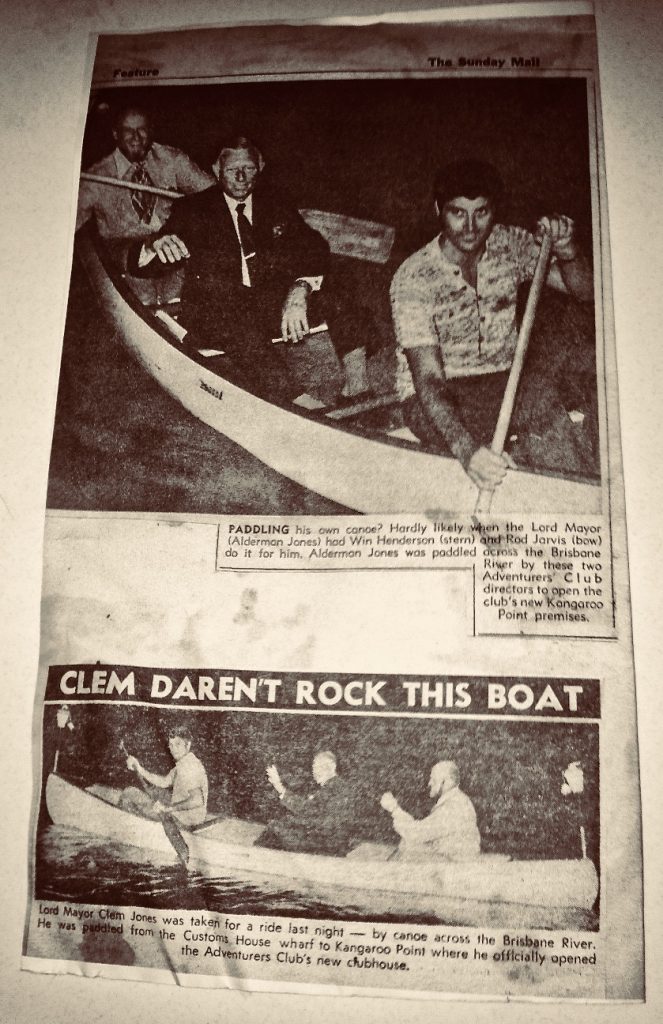City Splashdown – The Sunday Mail, April 16, 1978
Who remembers the City Council’s “Life.Be in it” campaign?
I wonder if this could happen today. This report in The Sunday Mail of 16 April 1978 describes a member of the Adventurers Club parachuting into the river near the Story Bridge. Text is typed below:
Another interesting point is that the 200 spectators were in “a new and as yet unnamed park” – the park was officially opened three months later on 13 July 1978 and named Captain Burke Park.

With legs waving and singing loudly, David McEvoy, 29, yesterday became probably the first parachutist to touch down within Brisbane’s inner city limits.
Parachutist David McEvoy, 29, jumped from a plane flying over the city centre and splashed down in the B river near the Story Bridge.
Windy conditions enabled him to keep his parachute above the water until a speedboat collected him.
David said he had jumped more than 2000 times, 12 of which were into water.
“It isn’t any more difficult, but it’s a pain because you usually get your parachute wet,” he said. Fellow member of the Rambler’s Parachute Club, Peter Nobbs, 30, also jumped and splashed down in the river.
The jumps were part of a “Life. Be in it” adventure day being held on the B riverbank near the Story Bridge.
David said the State Transport Department specified that the men had to land in the river 100 metres from the bridge and 50 metres from the shore.
About 200 people lined the banks in a new and yet unnamed park, to watch the jumps.
Most were there to take part in the adventure day which was organised by the Brisbane Adventurers Club.
Activities included water skiing, canoeing, diving, kite flying and ball games.
The Queensland coordinator of the “Life. Be in it” campaign said he was disappointed with the attendance. He had expected 1500 people.
Mr. Darcy has been involved in the campaign for four years.
















